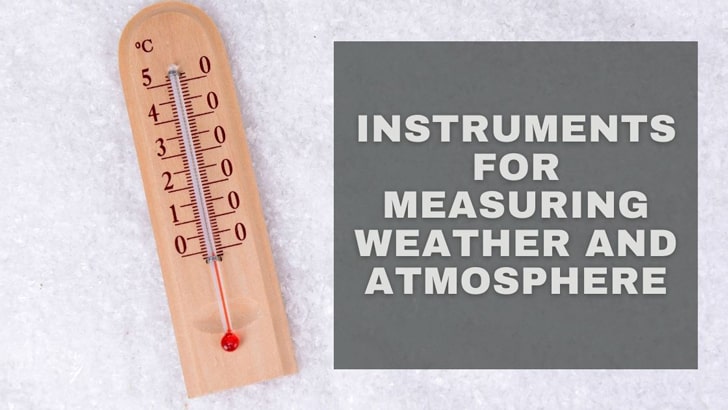Temperature, wind, and precipitation are all-weather factors. In the troposphere or lower atmosphere, weather change is most prevalent. Temperature, atmospheric pressure, humidity, precipitation, solar radiation, and wind all have a role in controlling the weather. Weather patterns may be established using this information, local air quality can be evaluated, and future statistics can be predicted using weather measuring instruments.
What’s the point of weather measurements?
The quality of the ecosystem is influenced by the ambient circumstances created by various meteorological elements. When weather factors interact, they create a chain reaction beyond the atmosphere. Clouds are formed when temperature, pressure, and humidity (moisture) combine. As a result, these clouds can lower the amount of solar energy that plants get or increase the frequency of rainfall in a particular region.
Instruments
The tools and equipment used to measure the weather and track data from weather patterns across time are weather instruments. Scientists and meteorologists use weather measuring instruments to study the Earth’s climate and weather patterns.
Thermometer
Using a digital thermometer, one may determine the temperature on the Celsius (°C) scale. Place the thermometers in a Stevenson Screen to ensure the readings are taken in a well-ventilated location. Slatted sides, a sloped ceiling, and four legs elevate this wooden box off the floor. The white paint serves as a reflector for the sun.
Rain Gauge
An instrument called a rain gauge is used to measure rainfall. It’s nothing more than a rain-catching cylinder. Most rain gauges are fixed on the ground around 30cm above the gauge’s surface to avoid being influenced by rain splashes. The container’s exterior has a millimetre scale for measuring the amount of rain falling. If the cylinder collects an inch of rain, it has rained one inch. The funnel flowing into the cylinder of most rain gauges is relatively large in diameter. It is also common for rain gauges to be heated if the temperature dips below freezing.
Compass(Axis of the Wind)
The compass shows the direction of the wind. As the westerly wind moves eastward, the wind blowing from the west is referred to as a westerly wind rather than an easterly wind.
A wind vane is a standard tool for determining the direction of the wind.
Anemometer
An anemometer finds the velocity of the wind. The anemometer’s cups should be able to rotate freely if it is held at arm’s length above the head. Knots are a unit of measurement for wind speed.
Barometer
The weight of the air on our bodies is known as atmospheric pressure. Because there is so much air above us, it puts pressure on us despite its lightness. A barometer is used to measure atmospheric pressure, and millibars are the units of measurement. The higher your altitude is, the more you feel the strain. A pressure value of more than or equal to 1000 millibars is considered high pressure, whereas a reading of less than is considered low pressure.
Hygrometer
The water vapour in the atmosphere may be measured with a hygrometer. As the name suggests, humidity refers to how ‘wet’ the air around us. Electronic hygrometers and hygrometer apps are two ways to monitor humidity and water vapour. An electronic hygrometer measures resistance by taking a sample of air and then calculating the humidity.
